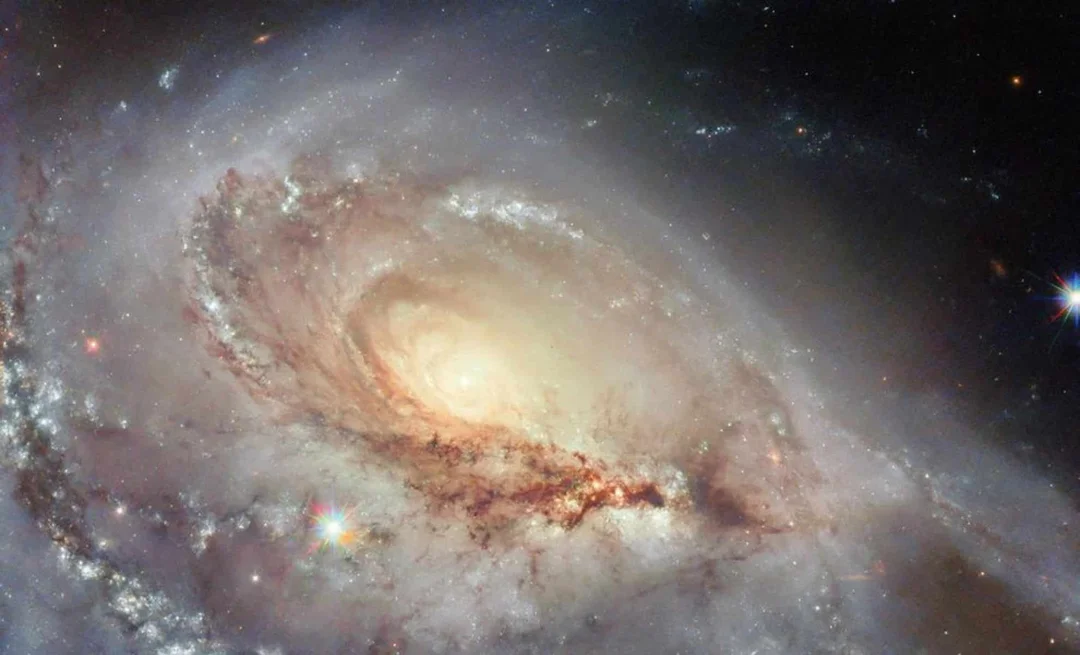
Hubble Captures Stunning Image of One-Armed Spiral Galaxy Arp 184
The Hubble Space Telescope has once again delivered a breathtaking image, this time revealing the stunning details of Arp 184, a peculiar spiral galaxy located approximately 190 million light-years away in the constellation Camelopardalis. What makes this galaxy so intriguing is its distinct lopsided appearance, featuring a single, prominent spiral arm extending dramatically towards Earth.
Arp 184, also known as NGC 1961, earned its place in the Atlas of Peculiar Galaxies, a collection compiled by astronomer Halton Arp in 1966. This atlas showcases galaxies with unusual shapes and behaviors, defying traditional classifications. Arp 184 perfectly embodies this categorization due to its asymmetrical structure.

Unlike typical spiral galaxies boasting symmetrical arms winding evenly around a bright center, Arp 184 presents a stark imbalance. One side of the galaxy is vibrant with stars and gas, while the other side exhibits only faint traces of these components. This unusual characteristic has earned it the nickname "One-Armed Wonder." Theories suggest that past interactions or collisions with nearby galaxies may be responsible for this peculiar shape.
Adding to its mystique, Arp 184 has a dynamic history of supernovae. Over the past three decades, this galaxy has hosted four known supernovae events, making it a prime target for supernova hunting. These stellar explosions not only release tremendous amounts of energy but also play a crucial role in the chemical evolution of galaxies.
The Hubble Space Telescope has played a crucial role in observing these explosive events. By tracking the remnants of these stellar explosions, astronomers can gain valuable insights into the processes governing the birth and death of stars. The energy released by supernovae can trigger the formation of new stars or, conversely, hinder star formation, profoundly shaping the structure and evolution of the galaxies.
The Hubble's image is the result of multiple observing programs, including snapshot entries that are short observations that slotted into time gaps between other proposals, targetting galaxies like Arp 184 for their peculiar features.

This detailed observation also helps researchers study dynamic events beyond supernovae, such as tidal disruption events where stars are torn apart by the gravitational pull of supermassive black holes.
The captivating image of Arp 184 serves as a reminder of the universe's vastness and the countless cosmic oddities that continue to fascinate and challenge our understanding. What forces truly shaped the unique appearance of Arp 184? Let us know your thoughts in the comments below!
Don't forget to share this fascinating discovery with your fellow space enthusiasts!